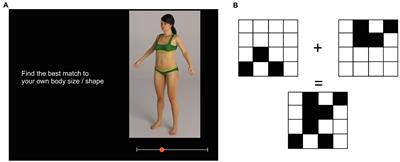The Effect of Own Body Concerns on Judgments of Other Women’s Body Size

We investigated the relationships between healthy women’s estimates of their own body size, their body dissatisfaction, and how they subjectively judge the transition from normal to overweight in other women’s bodies (the “normal/overweight” boundary). We propose two complementary hypotheses. In the first, participants compare other women to an internalized Western “thin ideal,” whose size reflects the observer’s own body dissatisfaction. As dissatisfaction increases, so the size of their “thin ideal” reduces, predicting an inverse relationship between the “normal/overweight” boundary and participants’ body dissatisfaction. Alternatively, participants judge the size of other women relative to the body size they believe they have. For this implicit or explicit social comparison, the participant selects a “normal/overweight” boundary that minimizes the chance of her making an upward social comparison. So, the “normal/overweight” boundary matches or is larger than her own body size. In an online study of 129 healthy women, we found that both opposing factors explain where women place the “normal/overweight” boundary. Increasing body dissatisfaction leads to slimmer judgments for the position of the “normal/overweight” boundary in the body mass index (BMI) spectrum. Whereas, increasing overestimation by the observer of their own body size shifts the “normal/overweight” boundary toward higher BMIs..
Read the full article at the original website
References:
